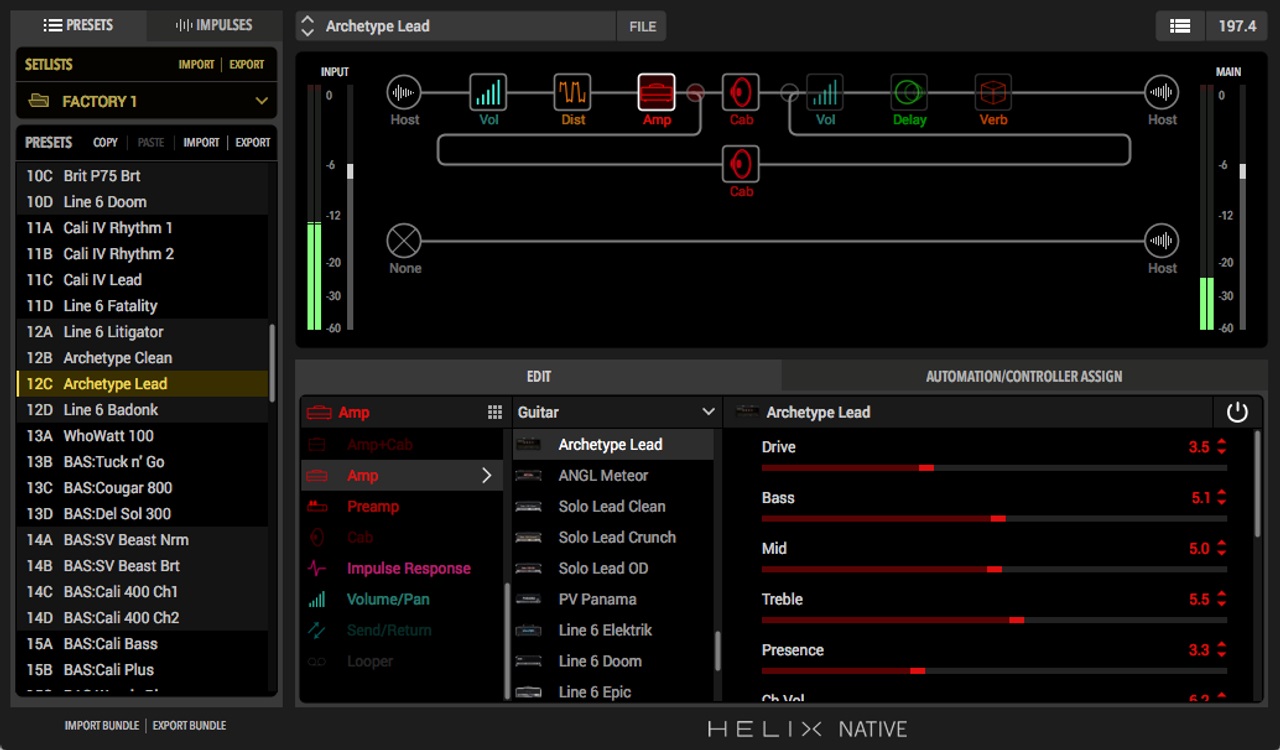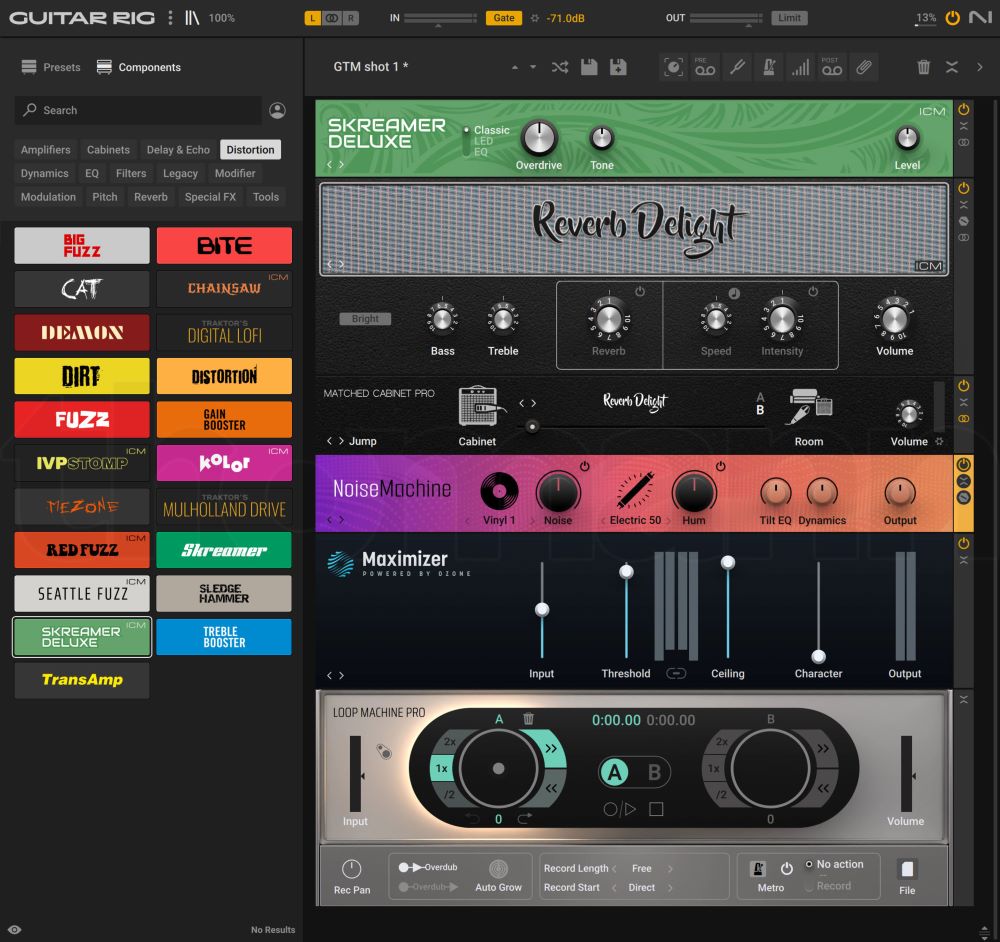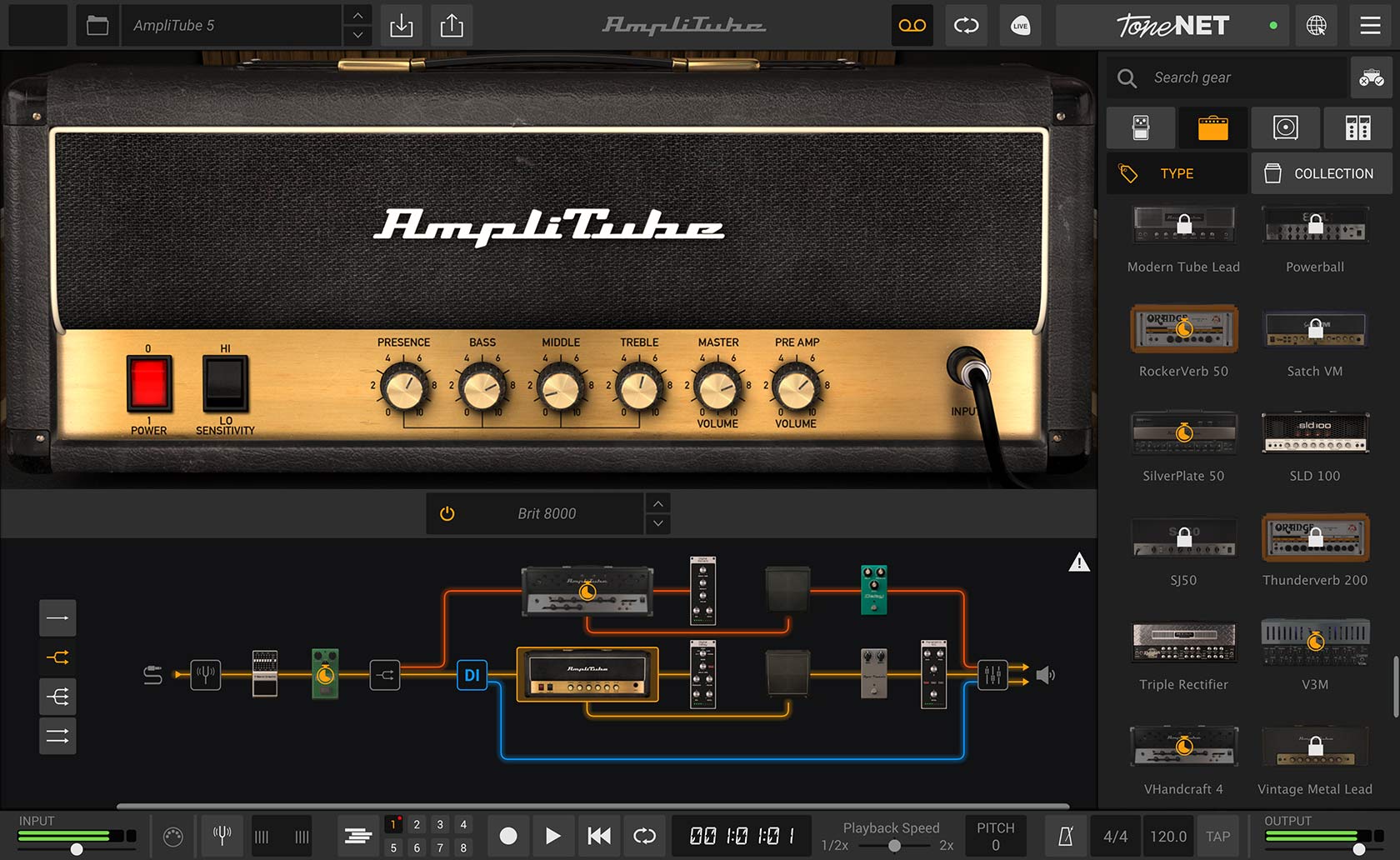
Virtual guitar amplifiers have come a long way – to the point where it is nearly impossible to tell the difference between the real thing and a plugin on your computer. Musicians can now access expensive amps and effects at a fraction of the cost, and record authentic guitar tones with ease.
Line 6 Helix Native

Line 6 was one of the first companies to offer digital recreations of guitar amps and effects. Many older guitarists will remember one of the red kidney-bean shaped POD devices, and the company's DL-4 delay unit can still be found on many a pedalboard. Helix Native, a plugin version of their current line of hardware modelling products, is highly regarded in the guitar community. It has even been said, in forums, that the HX Stomp is the best guitar pedal ever made.
There is no doubting the quality and range of the sounds within Helix Native. Since launching nearly 10 years ago, Line 6 has committed itself to a rigorous update policy at no extra cost. This has instilled a sense of confidence among the user base and solidified Helix as a top-tier product.
Pros:
- Professional quality models of amps and effects
- Significant discount if you own a hardware Helix product
- No in-app purchases
Cons:
- Steep learning curve to get the best out of the software
- User interface not as inspiring as other plugins
- No option for profiling your own amps and effects
line6.com/helix/helixnative.html
IK Multimedia AmpliTube 5 MAX
IK Multimedia is causing quite a stir with its latest TONEX ONE amp profiling mini pedal. However, its AmpliTube modelling software shouldn't be overlooked. This is a monstrous plugin, and guaranteed to bring a smile to the face of any guitar geek. The user interface graphically represents each amp as it appears in the real world, and, in some cases, you have officially licensed models from the likes of Orange, Fender and Mesa Boogie. For the budding guitarist, there is an eight-track mini DAW and looper, as well as models of artist-specific gear such as Brian May's ‘Deacy’ amp that featured on some of Queen's legendary tracks. IK Multimedia carries some weight within the world of digital signal-processing as it is responsible for the popular T-RackS mastering software, so you can put aside any thoughts that AmpliTube might be a case of style over substance.
Pros
- Contains many officially licensed models of amps and effects
- Great as a practice tool
- Beautiful GUI
Cons
- Not all amps and effects are included
- Might get overshadowed by newer TONEX software
- Requires a large screen for best experience
ikmultimedia.com/products/amplitube5
Native Instruments Guitar Rig Pro 7

Our third plugin is arguably one of the more unique in the amp modelling world. Guitar Rig has been around for many years and has stuck to the format of rack-type modules. I must say, I do like the idea of the top-to-bottom aesthetic, and believe it makes more sense to students. This is where Guitar Rig is onto a winner – it's not just a straight-up guitar amp modeller, with all the traditional things you expect. From an educational perspective, the compressors within the software are a hidden gem. They replicate three of the classic devices music tech candidates need to know about, with a simple naming convention, plus there are some amazing sound-design options that can be achieved with tools such as a step sequencer, LFO and even mid/side processing.
Pros
- Simple to use
- Unique sound design options
- Great value
Cons
- Not as many models of amps and effects as competitors
- Some amp models could be more accurate
- Purists may be put off by non-guitar elements
native-instruments.com/en/products/komplete/guitar/guitar-rig-7-pro
Conclusion
In my opinion, the Helix Native is for musicians who use the hardware or work in a pro environment. The AmpliTube is the most fun if you want to be inspired every time you pick up your instrument and want a standalone plugin that does everything. And the Guitar Rig Pro 7 is the best option for schools, since it's good value, easy to install, and students will gain knowledge required for Key Stage 4 and 5 music technology elements.





